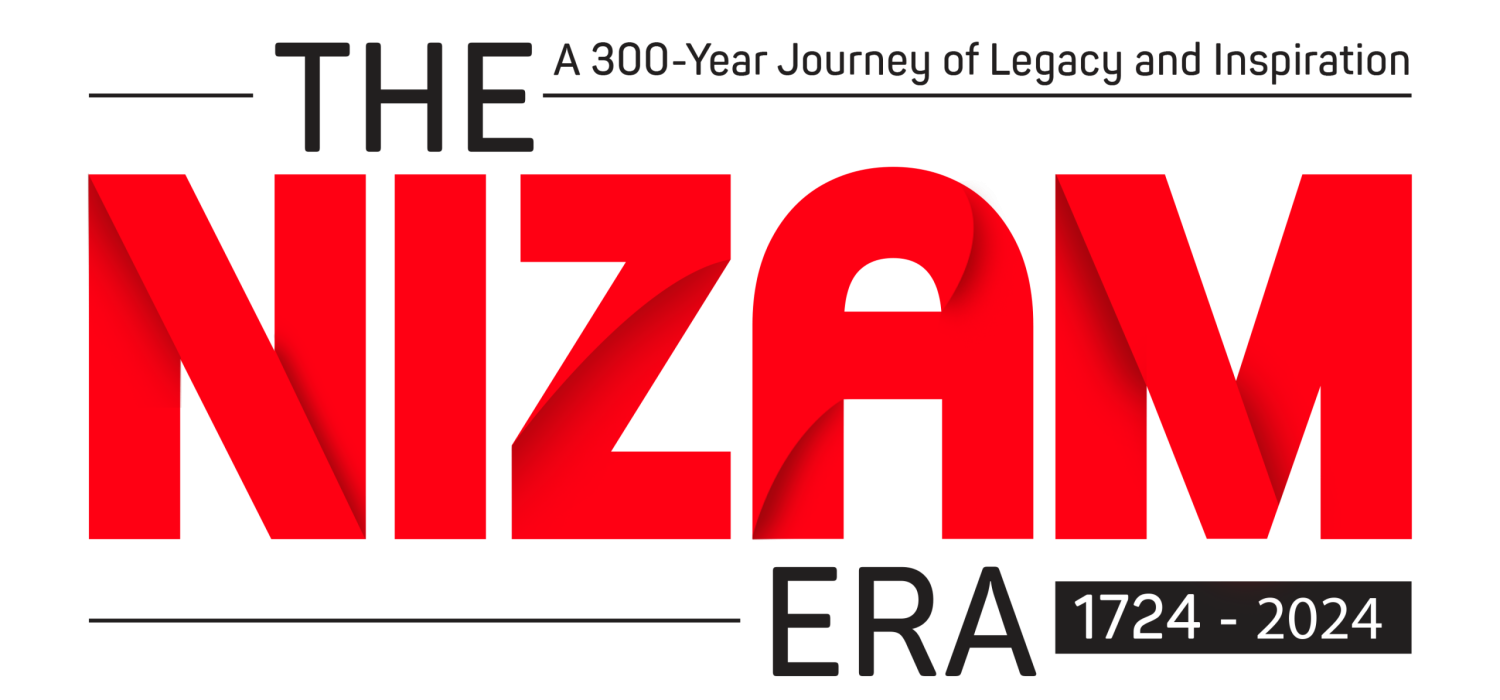Professor Majeed Bader
Professor Majeed Bedar is a renowned scholar of Urdu. He is the former Head, Department of Urdu, Osmania University, Hyderabad. He started his career from Aurangabad. He is a multi-disciplinary scholar and the author of several books.
He is very popular among students and scholars. He has presented papers in several national and international seminars and served as a visiting professor in several universities. In this seminar, he will express his views on the Asif Jahi family and the political landscape.
Dear Attendees,
If we consider the previous regime, we remember that there was a building in Aurangabad called Damdi Mahal. However, it has since disappeared due to road widening. The people working in this area were required to contribute one Damdi (one paisa) from their earnings. Once all the money was collected, Damdi Mahal was constructed.
Mahmood Siddiqui has pointed out that the government is now inclined to provide various facilities for the rights of SC and ST communities.
Marine College and Marathwada University were established by Ambedkar, and the land was donated to him by the Honorable Nizam. What could be more significant than this? I would like to highlight that the Asif Jahi Empire, which existed from 1724 to 1948, is arguably one of the most unique empires in the world, as it represented not just one language, but four languages. The region had speakers of several languages, including Telugu, Marathi, Kandi, Urdu, and Persian. As a result, it became a multi-language empire in the Deccan. To summarize, this empire was founded in the city of Aurangabad.
Mahmood Siddiqui is my disciple. He mentioned the location of the first Nizam’s coronation, which took place at Naukhanda Mahal. The mace used in that ceremony is still there today, although the building itself has been destroyed. Nizam why did he like Naukhanda? He was constructing buildings for his own use. For your information, “Naukhanda” is a Hindi word. It was designed by a qualified architect from Aurangabad. Interestingly, he did not prefer any other palace over Naukhanda. He appreciated the nuances of the Indian language, despite being a Persian who was fluent in Persian. Furthermore, he never referred to himself as a king, which is quite unusual and notable. The First Nizam ruled until 1748 and referred to himself as the governor of the Mughals. Additionally, during his reign, Khamruddin Ali Khan was awarded the title of Khaleej Khan.
Upon conquering Shakkarkhera, the Mughal emperors encouraged further expansion. There was a significant focus on social work and welfare initiatives. For example, Harsul Talab in Aurangabad continues to provide a water supply for the city’s residents even today. Following this, additional canals were established by other individuals to enhance irrigation and water accessibility. If you visit Aurangabad today, you can still find many historic ponds. These ponds were once the main water sources for the city’s residents, similar to Usman Sagar and Himayat Sagar in Hyderabad. In 1724, the first Nizam took care of the city’s water needs, following the establishment of the Amba Canal by Mulk Ambar. Subsequently, others built additional canals to further improve the water supply. It cannot be said that the canal will benefit the people. The discussions included the pond, the canals, and other significant matters. There are seven famous temples: Kharkeshwar, Saleshwar, and Narbadeshwar, though I can’t recall their full names. All of these temples officially received Wazifa (Donations) from the First Nizam, which is a historical fact.
The scholar of his time, Sufi Ikram, who came from Iraq, built the dome of Muhammad Saeed Palang Posh, The construction is truly impressive and unbelievable. In it you will see arches, light will come from the arches, you will be able to see the sun, but not a single drop of water enters inside, the construction is strange, how they have taken intellectuals and people of wisdom with them.
We just discussed Maharaja Chandulal Shada, a notable poet who also served as Prime Minister. His building in Aurangabad is quite famous. The construction of this building began under the first Nizam and continued with contributions from different kings during their respective reigns.
One important thing that dates back to the Second Nizam era, today there is talk of women empowerment, there is talk of educating women, you will be surprised to hear, when Mir Nizam Ali Khan Second Nizam was in a famine, he brought 1,000 girls from the surrounding areas and trained them there. And he established the first Meena Bazaar in South India, today we hear about Meena Bazaar in Ramadan, the first Meena Bazaar was established in Aurangabad in 1761.
An important aspect of the era of the Second Nizam is the early emphasis on women’s empowerment. Today there is talk of women’s empowerment, there is talk of educating women, you will be surprised to hear, when Mir Nizam Ali Khan Second Nizam was in a famine, One significant development from the era of the Second Nizam is the early initiative for women’s empowerment. Mir Nizam Ali Khan took the initiative to bring 1,000 girls from the surrounding areas and provide them with training. He also established the first Meena Bazaar in South India, which is known today, especially during Ramadan. This first Meena Bazaar was founded in Aurangabad in 1761.
During this time, women were involved in creating products, selling them, and purchasing goods. This initiative stands as the first evidence of women’s empowerment during the reign of Asif Jahi Badshah, the second king. All of this is part of our history. However, today, students want their education in computer science, engineering, and medicine, and they are not interested in studying history.
Dear guests, I have mentioned “Manzoom Samaj” and “Chirag Awdi”, which was written in 1821, as the first Tafseer (Translation) of the Quran. What contributions did people make during that period?
Now I am attracted to Urdu only because, I am a student of Urdu, if I mention Marathi or Kannada because Marathwada was also a part of Deccan, Hyderabad Karnataka was also a part of Deccan,
Now I am attracted towards Urdu only because, I am a student of Urdu, if I mention Marathi or Kannada because Marthwara was also part of Deccan, Hyderabad Karnataka was also part of Deccan. If I tell these things, it will take a lot of time.
Once we were going to Daulatabad Fort, Professor Abdul Sattar Dalvi of Bombay was with us, so I said a few words, he said, “Doctor, please wait.” I said, “Why?” He said, “I will write this down.” I said, “Why, brother?” He said, “I have a Marathi dictionary from the time of Shivaji.” The words you are saying are in Marathi.
I don’t know its meaning, we used to call it Safal Girdani. so people don’t know it. It means that we have failed to transfer our culture. There is a need for us to produce new scholars. The things that were said just now, the young people who presented their papers, it is expected that we will definitely work in this context.
I am only covering the period of Mir Usman Ali Khan, I understand the industries that developed, including the Hamro Mashro industry from Aurangabad, different methods of making cloth, and the resting places of the great Sufis, Khankhwahs, Temples, etc. The shared culture you are referring to dates back to the era of the First Nizam. Because First Nizam is the person who, when Nadir Shah Durrani attacked Delhi, and when he was the king here, went to Delhi and stopped Nadir Shah Durrani from carrying out the massacre. No one had the courage to stop Nadir Shah. The sword was swinging, and he approached Nadir Shah Durrani directly, saying “Those you are killing, you must kill them, provided that you bring them back to life.”
The sword was halted, and with it, the massacre came to an end. What a brave man it was who dared to speak the truth before such a great king! This reminds us of an era when kings ruled, much like the words from the poem of Mir Usman Ali Khan: “You are Kishan Prashad, and I am Khuda Prashad.” This serves as a powerful lesson of equality.
Two significant developments occurred during this seminar. Firstly, a university was established for Muslims, featuring a department of theology. Secondly, there is now a department of ethics available for non-Muslims. This represents a commitment to equality, doesn’t it? With these few words, I have written a lot on this occasion today. Poetry, women’s poetry, commentary, memoirs, all these things can be mentioned. A research paper can be written.
This meeting is convened in the vibrant city of Hyderabad to honor and celebrate the remarkable legacy of the Asif Jahi era, which spans an impressive three hundred years. We are particularly privileged to have the event organized by the esteemed heads of Munsif TV, who are dedicated to recognizing and preserving the rich history and cultural contributions of this significant period. This gathering not only serves as a remembrance of the past but also aims to foster discussions about the lasting impact of the Asif Jahi dynasty on the region and its culture.
What Sulaiman Siddiqui mentioned is that Ghulam Yasdani’s book, printed in London, is available, but no one is buying it. When Ramadan comes, we spend money on Handkerchief and sewaiya, but not to buy a book.
What is the future of a nation that has money and does not pursue education? You can know that thank you very much, goodbye.

